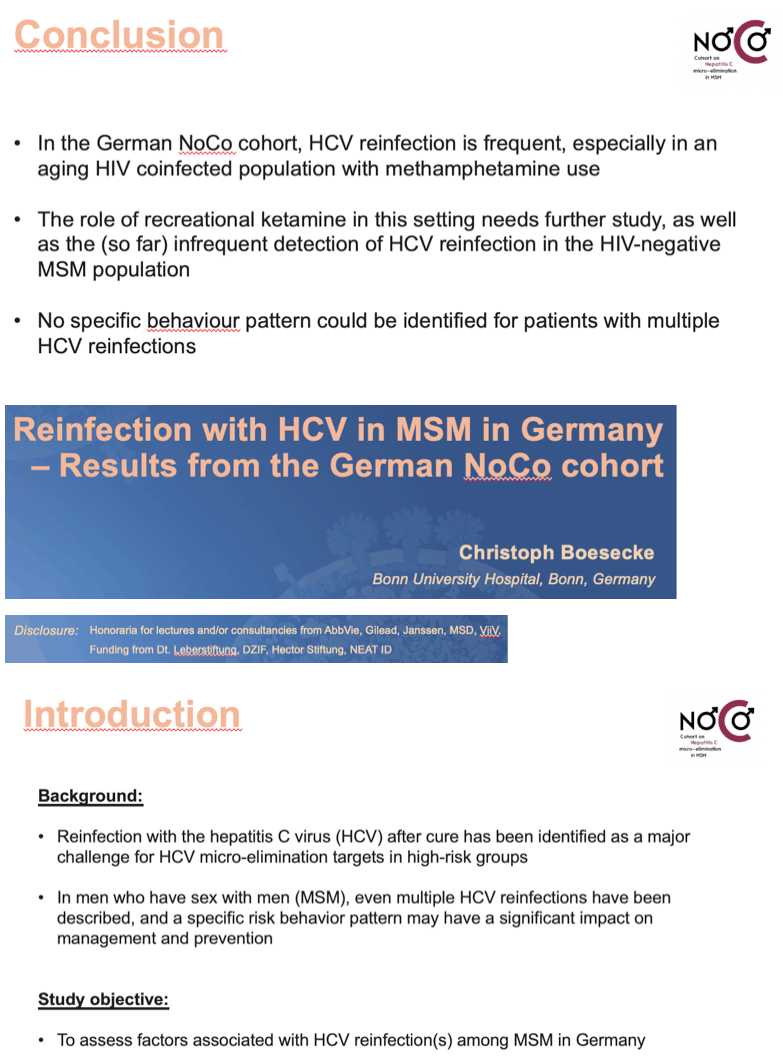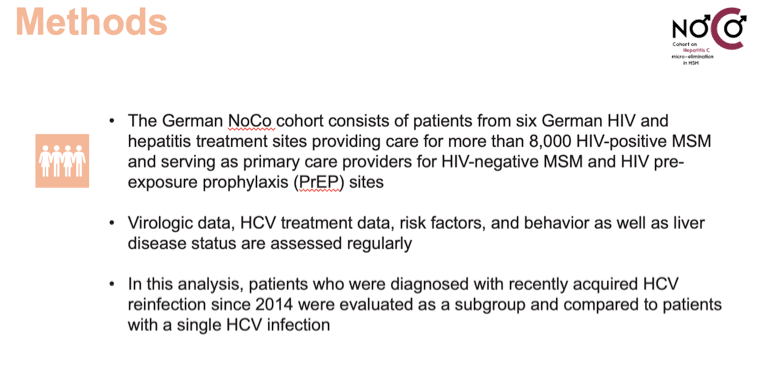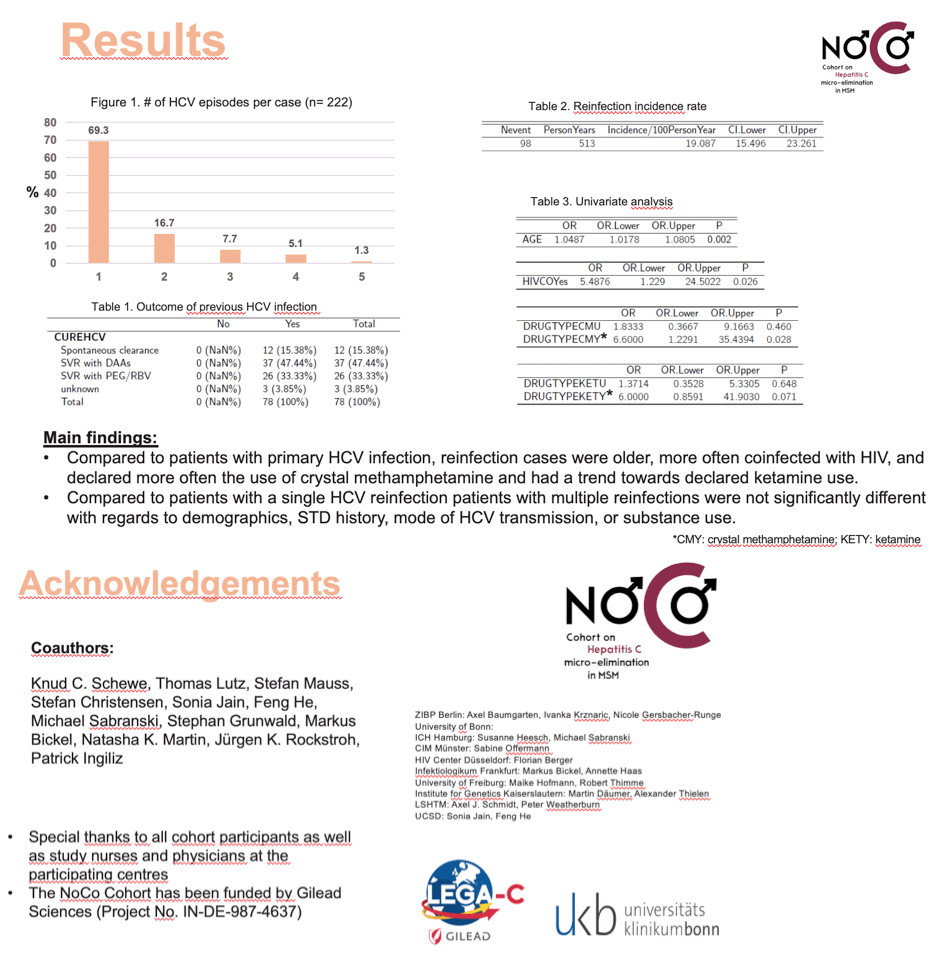 |
 |
 |
| |
REINFECTION WITH THE HEPATITIS C
VIRUS IN MEN WHO HAVE SEX WITH MEN
|
| |
| |
CROI 2021 March 6-10 Reported by Jules Levin
Christoph Boesecke1, Knud C. Schewe2, Thomas Lutz3, Stefan Mauss4, Stefan Christensen5, Sonia Jain6, Feng He6, Michael Sabranski2, Stephan Grunwald7, Markus Bickel3, Natasha K. Martin6, Jürgen K. Rockstroh1, Patrick Ingiliz7
1Bonn University Hospital, Bonn, Germany, 2Infectiologisches Centrum,
Hamburg, Germany, 3Infektiologikum, Frankfurt, Germany, 4Center for HIV and Hepatogastroenterology, Düsseldorf, Germany, 5Muenster University Hospital, Muenster, Germany, 6University of California San Diego, La Jolla, CA, USA, 7Center for Infectiology, Berlin, Germany
Background: Reinfection with the hepatitis C virus (HCV) after cure has been identified as a major challenge for HCV micro-elimination targets in high-risk groups. In men who have sex with men (MSM), even multiple HCV reinfections have been described, and a specific risk behavior pattern may have a significant impact on management and prevention. Here, we assess factors associated with HCV reinfection(s) among MSM in Germany.
Methods: The German NoCo cohort consists of patients from six German HIV and hepatitis treatment sites providing care for more than 8000 HIV-positive MSM and serving as primary care providers for HIV- MSM and HIV pre-exposure prophylaxis (PrEP) sites. Virologic data, HCV treatment data, risk factors, and behavior as well as liver disease assessment are assessed regularly. In this analysis, patients who were diagnosed with recently acquired HCV reinfection since 2014 were evaluated as a subgroup and compared to patients with a single HCV infection.
Results: Between January 2014 and September 2020, 81/214 (37.8%) men with recently acquired HCV reinfection were included, and during a follow-up time of 416 person-years (py) the incidence rate for HCV reinfection was 18.5/100 py (95% confidence interval (CI) 14.6 - 23.1). 75 subjects had complete datasets: HCV reinfection occurred after treatment-induced cure in 60 (80%) and after spontaneous clearance in 13 (17.3%) cases. Only two reinfections occurred in HIV-negative individuals. Most reinfections were detected through routine HCV RNA testing (68%), followed by testing for ALT elevation (25.6%). Compared to patients with primary HCV infection, reinfection cases were older (OR 1.06, p<0.001), more often coinfected with HIV (OR 5.02, p=0.035), and declared more often the use of crystal methamphetamine (OR 5.9, p=0.041) and we identified a trend towards declared ketamine use (OR 6.0, p=0.07). Compared to patients with a single reinfection (n=58) patients with multiple reinfections (n=23) were not significantly different with regards to demographics, STD history, mode of transmission, or substance use.
Conclusion: In the German NoCo cohort, HCV reinfection is frequent, especially in an aging HIV coinfected population with methamphetamine use. The role of recreational ketamine in this setting needs further study, as well as the (so far) infrequent detection of HCV reinfection in the HIV-negative MSM population. No specific pattern could be identified for patients with multiple HCV reinfections.



|
| |
|
 |
 |
|
|